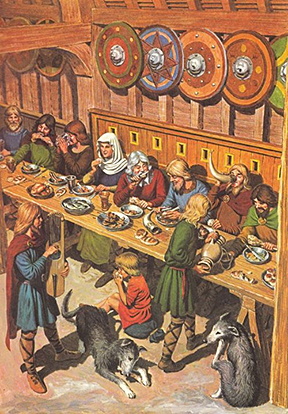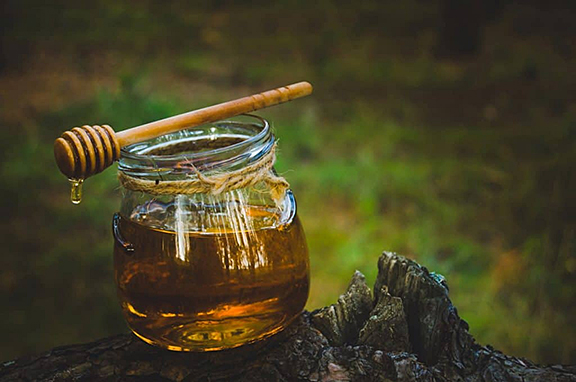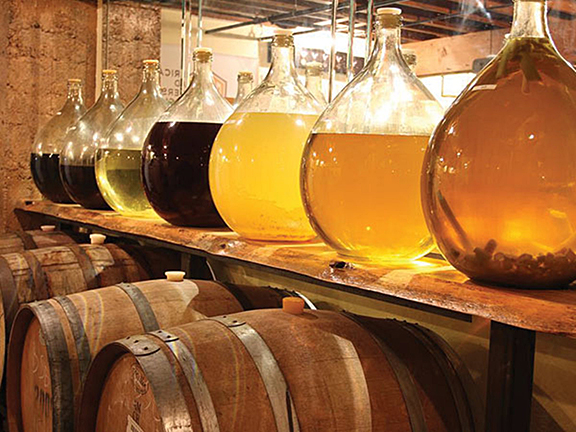I Feel the Need, the Need for Mead!
While visions of kings, knights, and the yesteryears of the Middle Ages might come to mind when one mentions the word mead, it is largely still alive and well in the 21st Century.  We even have a day for it – National Mead Day occurs on the first Saturday of August each year, first instituted by the American Homebrewers Association in 2002.
We even have a day for it – National Mead Day occurs on the first Saturday of August each year, first instituted by the American Homebrewers Association in 2002.
Mead can trace its beginnings to several ancient civilizations located in Europe, Africa, and Asia, dating as far back as 7000 BC! In ancient China, pottery remnants found during archeological excavation have found that the vessels contained honey, rice, and other organic compounds only produced during fermentation. Over the course of world history, mead can be found everywhere. Mead has been mentioned in writings of the Rigveda, an ancient book of the Vedic religion dating back to 1700 BC that is foundational to modern-day Hinduism. During the Golden Age of ancient Greece (480-404 BC), it is said that mead was the preferred drink of the population. Even Aristotle (384-322 BC) wrote about mead in his Meteorologica. In 550 AD the “Song of Mead,” a poem penned by Welsh bard Taliesin describes a great feast, as feasts are traditionally associated with mead. Even the Old English epic poem of Beowulf, depicted Danish warriors victoriously drinking mead.
The main feature of mead is that it is created from yeast, honey, and water; a mixture where the honey’s sugars are allowed to ferment. Then other ingredients such as fruits, flowers, spices, grains, or hops are added to the beverage. One of the earliest recorded recipes for mead was written by Hispanic-Roman naturalist Columella in his De re rustica, dated 60 AD:
“Take rainwater kept for several years, and mix a sextarius [equivalent to approximately 18.27 fl oz] of this water with a [Roman] pound of honey. For a weaker mead, mix a sextarius of water with nine ounces of honey. The whole is exposed to the sun for 40 days and then left on a shelf near the fire. If you have no rain water, then boil spring water.”
The process of making mead is twofold. In primary fermentation, the process happens over the course of 1-2 months. Once the primary stage begins to slow, the mead is transferred to a different container via racking. Racking consists of moving the liquid using gravity rather than utilizing a pump, thus leaving the yeast remnants relatively undisturbed while transferring the liquid. The second container is where the secondary fermentation takes place, which is a longer, slower fermentation process known as aging that will occur over a 6–9-month period. To note, this technique is not the only way to make mead, as there are several different and unique processes that can be employed with the same result.
A finished mead is influenced by honey quality, composition of the honey, strain of the yeast, other ingredients utilized in the concoction, and the temperature of the environment during fermentation. Mead can be sweet, semi-sweet or dry, and it can also be still or carbonated, with ABVs ranging from 3.5% at lowest to a hefty 20%!

Fun facts:
• A mead that contains spices or herbs is called a metheglin.
• A mead that is fermented with grape juice is called a pyment.
• A mead that contains fruit is called a melomel, and there are even subcategories to this including: Rubamel, a melomel mead made with raspberries and Bilbemel, a melomel mead made with blueberries.
• A mead made specifically with cinnamon and apples is known as a cinnamon metheglin or an apple cyser.
• A mead made with honey and maple syrup is an acerglyn.
Did you know that Central New York is home to a meadery? Comb Grown Mead – Not only a craft meadery, but 2024 winner of Best New Business by readers of the Auburn Citizen newspaper, and 2024 Small Business of the Year winner by the Onondaga Community College Small Business Development Center – is located at 26 Osborne St, in Auburn, NY. Owner and mazer (mead-maker), Elaine Ferrier, is originally from Canada, and has a Masters of Environmental Studies. She utilizes this knowledge to create unique and delicious small-batch versions of easy-drinking, carbonated meads that are on the drier side, known as “session” meads. Open Thursday-Saturday, Comb Grown Mead offers flights and pints in their recently-opened tasting room and outdoor patio. And if patrons enjoy something they taste? They’re in luck – cans are available for purchase to take home!
Take it from me, if you think you don’t like meads, or that they’re super sweet – think again. Comb Grown’s meads are crisp, clean, semi-sweet to dry, and actually crushable. Yours truly has sampled three different varieties:
• Rhubarb Rosé (8% ABV), a Gamay Noir rosé mead with elderflower and lemon extract – light, a little bit like a Rosé wine, pink in coloration, and slightly tart – simply a delight!
• Tree-One-Five Cyser (6% ABV), an apple mead made with late-harvest honey from Hive 315 combined with a blend of early-harvest apples from Owen’s Orchards – very light, bubbly, dry and bursting with fresh apple notes against a backdrop of honey – this was my favorite, and if you are a fan of hard ciders, you’ll love this too.
• Honey Pops (5.5% ABV) – a session mead, consisting of very prevalent honey flavors, while still maintaining an ease of drinkability.
With summer winding down, there is no better time to jet over to Auburn this August and enjoy a beverage with its origins dating back to the dawn of civilization. Cheers!
References: www.nationaltoday.com/mead-day/, https://en.m.wikipedia.org/wiki/Mead












